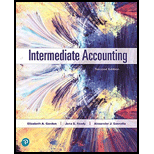
Convertible Bonds, Conversion. Using the information provided in E14-13, complete the following requirements assuming that the effective rate of interest for convertible bonds is 4% on the date of issue.
Required
- a. Determine the issue price of the debt.
- b. Prepare the amortization table for the bond issue assuming that Mobile Technology uses the effective interest rate method of amortization.
- c. Prepare the
journal entry when Mobile Technology issued the bonds. - d. Prepare the journal entry to record the first interest payment.
- e. The bonds converted on January 1, 2021. Prepare the journal entry to record the bond conversion.
E14-13. Convertible Bonds, Conversion. On January 1, 2018, Mobile Technology, Incorporated issued $650,000 of $1,000 par value, 6%, 6-year bonds. Interest is payable semiannually each January 1 and July 1 with the first interest payment due at the end of the period on July 1, 2018. The market rate of interest for similar non-convertible bonds on the date of the bond issue was 10%. However, because these bonds are convertible, the effective rate is 8%. Each bond is convertible into 20 shares of Mobile Technology’s $2 par value common stock. Assume there is no beneficial conversion option.
Required
- a. Determine the issue price of the debt.
- b. Prepare the amortization table for the bond issue assuming that Mobile Technology uses the effective interest rate method of amortization.
- c. Prepare the journal entry when Mobile Technology issued the bonds.
- d. Prepare the journal entry to record the first interest payment.
- e. The bonds converted on January 1, 2021. Prepare the journal entry to record the bond conversion.
Want to see the full answer?
Check out a sample textbook solution
Chapter 14 Solutions
Intermediate Accounting Plus Mylab Accounting With Pearson Etext -- Access Card Package (2nd Edition)
- Provide answer general Accounting questionarrow_forwardDegregorio Corporation makes a product that uses a material with the following direct material standards: Standard quantity 2.7 kilos per unit Standard price $9 per kilo The company produced 5,700 units in November using 15,760 kilos of the material. During the month, the company purchased 17,830 kilos of direct material at a total cost of $156,904. The direct materials purchases variance is computed when the materials are purchased. The materials quantity variance for November is: a. $3,330 F b. $3,236 F c. $3,330 U d. $3,236 Uarrow_forwardNonearrow_forward
- The blending department had the following data for the month of March: Units in BWIP Units completed 7,200 Units in EWIP (40% complete) 750 $27,000 Total manufacturing costs Required: 1. What is the output in equivalent units for March? 2. What is the unit manufacturing cost for March?arrow_forwardGiven answer accounting questionarrow_forwardAccounting question answerarrow_forward

 AccountingAccountingISBN:9781337272094Author:WARREN, Carl S., Reeve, James M., Duchac, Jonathan E.Publisher:Cengage Learning,
AccountingAccountingISBN:9781337272094Author:WARREN, Carl S., Reeve, James M., Duchac, Jonathan E.Publisher:Cengage Learning, Accounting Information SystemsAccountingISBN:9781337619202Author:Hall, James A.Publisher:Cengage Learning,
Accounting Information SystemsAccountingISBN:9781337619202Author:Hall, James A.Publisher:Cengage Learning, Horngren's Cost Accounting: A Managerial Emphasis...AccountingISBN:9780134475585Author:Srikant M. Datar, Madhav V. RajanPublisher:PEARSON
Horngren's Cost Accounting: A Managerial Emphasis...AccountingISBN:9780134475585Author:Srikant M. Datar, Madhav V. RajanPublisher:PEARSON Intermediate AccountingAccountingISBN:9781259722660Author:J. David Spiceland, Mark W. Nelson, Wayne M ThomasPublisher:McGraw-Hill Education
Intermediate AccountingAccountingISBN:9781259722660Author:J. David Spiceland, Mark W. Nelson, Wayne M ThomasPublisher:McGraw-Hill Education Financial and Managerial AccountingAccountingISBN:9781259726705Author:John J Wild, Ken W. Shaw, Barbara Chiappetta Fundamental Accounting PrinciplesPublisher:McGraw-Hill Education
Financial and Managerial AccountingAccountingISBN:9781259726705Author:John J Wild, Ken W. Shaw, Barbara Chiappetta Fundamental Accounting PrinciplesPublisher:McGraw-Hill Education





